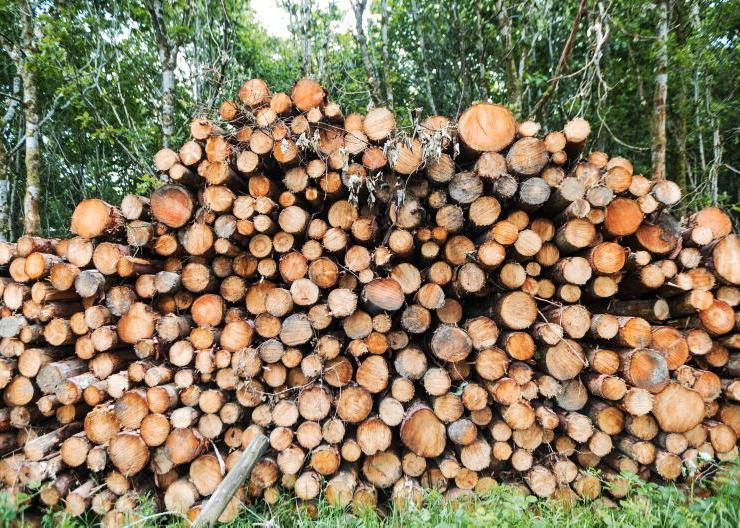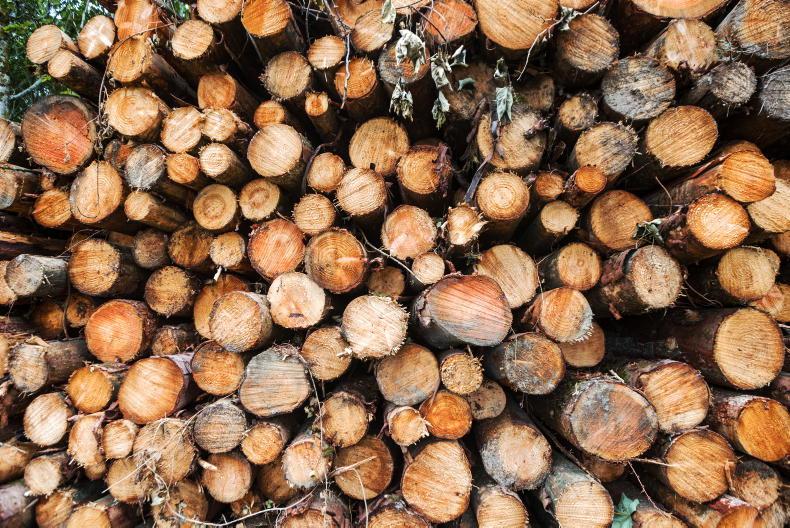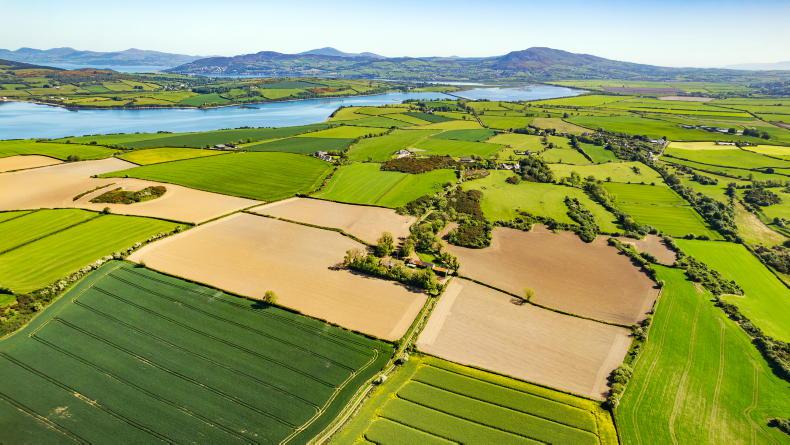Factors that influence the value of forestry as a land use or investment option vary widely. They include existing and future timber to market potential, land availability for forestry, as well as State supports for afforestation and policy issues, especially the role of forestry in climate change mitigation.
Inevitably, forest land sales are a realistic barometer of the commercial worth of forestry. Despite – or because of – poor annual afforestation programmes in recent years, forest sales have been buoyant.
Forest land sales
While the majority of forest sales and purchases are commercially motivated, forestry companies and estate agencies cite other reasons for activity, which coincide with the findings of the COFORD report, A Guide to the Valuation of Commercial Forest Plantations.
These include “environmental considerations and lifestyle choices”, according to the Government advisory forestry body.
Paul Lafferty of Forestry Sales, a Castlerea-based auctioneer who specialises in forest land sales, agrees with this assessment, as forests of all sizes and species find a market.
“The highest demand is for commercial mature and semi-mature forests, featuring mainly Sitka spruce,” he says. Depending on age, access and quality, these achieve prices between €6,500 and €8,000/ac (€16,000 and €20,000/ha).
“Exceptional, high-quality commercial crops over 20 years are achieving prices up to €9,000/ac, or €22,500/ha,” he says. While institutional investors generally prefer larger forests, over 15ha, there is a good demand for small native plantations.
“There is a market for crops, which may be no more than a few acres,” says Lafferty. “Individuals with disposable income can purchase small holdings of native woodland for around €5,000 to €6,000/ac.”
Conor Daly, MD of The Forestry Company says interest in purchasing forestry land is robust and varied, despite repeatedly low annual planting programmes.
“Spruce-dominated plantations achieve the best prices,” he maintains. Wind stable, well-drained forests that can be thinned with confidence are in demand, “with exceptionally high prices being achieved.”
Investment companies are more tolerant of species diversity, as long as there is a viable area of conifers.
“There is also good demand for small areas of recreation type forests, mainly broadleaves with features such as rivers, lakes and old ruins,” he says. There is also some interest in diseased ash plantations, which are eligible for grants and preferably with firewood content.
“We are not surprised that high prices are being paid for forests,” says Pat O’Sullivan, technical director, Society of Irish Foresters. “Exceptional prices such as €22,000/ha may be tempting for some farmers to sell, but owners should also assess the value of the standing crop, which may provide an income of €2,000/ha for thinnings and €25,000/ha at clearfell.”
While €3,500/ha needs to be set aside for replanting, the income received from harvesting makes retaining ownership of the forest an attractive option, O’Sullivan maintains. Forest owners who wish to convert to an alternative silvicultural regime after clearfelling may have some or all of the reforestation costs covered and a seven-year annual ecosystem payment is provided (see table 1).
Timber market
Currently, small log prices for the wood-based panel and renewable biomass energy sectors are strong. Although the large sawlog market is static, prices are expected to increase in the short-term due to the suspension of log imports from Scotland, estimated at between 150,000m³ and 250,000m³ annually.
In the medium-term, increased Irish, sawn timber will be required in the domestic construction market if the Government achieves its target of 300,000 new homes by the end of 2030.
The Government-appointed Timber Construction Steering Group (TCSG) emphasised the potential for home-grown timber use, especially in timber frame construction. At present, timber frame has 40% of the housing market, but the objective is to increase this to 80%.
In addition, the TCSG is examining the regulatory and standardisation challenges that limit Irish apartment construction in timber to 10m in height – unlike EU countries, where buildings up to 80m tall are constructed in engineered softwood.
Afforestation policy
There is broad agreement between the Department of Agriculture, Food and the Marine, the National Climate Action Plan (NCAP), the EPA and the Climate Change Advisory Council (CCAC) that Ireland requires an annual minimum afforestation programme of 8,000ha, compared with the recent average of 1,600ha.
The only positive is that farmers plant 79% of an admittedly depressed programme.
“Afforestation is the single largest land-based climate change mitigation measure available to Ireland,” as outlined by the NCAP. The CCAC acknowledges analysis by University Galway and COFORD, which indicates that even an 8,000ha target will be insufficient.
“Target afforestation rates need to be approximately 18,000ha per year to reach carbon neutrality by 2050,” the CCAC report maintains.
Achieving planting targets even remotely close to this will require removal of barriers to afforestation and the establishment of a Forestry Development Agency, which O’Sullivan, Daly and Bruton support.
A business-as-usual approach is no longer sufficient if farmers rather than institutional investors are to be the main players in a viable afforestation programme.
There are currently over 6,500ha of land with afforestation licences. What can farmers who activate planting licences expect in revenue from grants and premium payments?
Depending on the Forest Type (FT), the farmer wishing to plant 10ha will receive between €38,580 and €77,440 in establishment grants covering site preparation, fencing, planting and fertilisation if required (see table 2).
Over the following 20 years, the farmer will receive between €149,200 and €220,600 in tax-free annual payments in addition to timber revenue during the 15-20-year period in spruce forests.
FT schemes cater for medium-to-large scale forest establishment; the Native Tree Area (NTA) scheme is designed for farmers who wish to plant no more than a couple of acres, but don’t want to go through the cumbersome and costly licence application system or commit to large areas of forestry.
Paddy Bruton is an NTA advocate and sees the scheme as valuable in its own right but also “as a gateway to forestry on a larger scale for some farmers”.
After initial reservation, the MD of Forestry Services Ltd and Euroforest Ireland now believes it has strong potential, but needs greater promotion, as only 349 NTA applications were issued last year for an area of 378ha.
“I provide information on forestry to knowledge transfer (KT) groups organised by agricultural consultants and invariably when I introduce the NTA scheme it’s the first time virtually all farmers in the room have heard about it,” he says.
As a result of his presentations at KT meetings and his own company promotion, interest in the NTA is increasing.
“We now have two staff involved full-time in the scheme and while there’s a lot of work involved, once farmers are aware of the costs and benefits, they engage with it,” he says.
Farmers see it as a way to landscape their farms because field corners, exposed sites and small unproductive areas can be planted up to 1ha or 2ha, if a farm qualifies for the NTA 2 scheme, which is designed to enhance water quality.
Farmers receive a grant of €6,744/ha and 10 annual tax-free premium payments totalling over €22,000/ha without negatively affecting other supports (see table 2).
He says the scheme would benefit from “minor adjustment to make it even more attractive to buy into, especially NTA 2, which is unnecessarily onerous.”
This is also the view of a number of other foresters and forestry companies. The scheme area which limits each application to 1ha might also be reviewed.
For example, a farmer with small unproductive areas exceeding 1ha might be allowed to plant a greater area in total, providing no individual parcel exceeds 1ha.
Forest sales buoyant.Prices up to €9,000/ac.Modest increase in 2025 planting.Timber market forecasts good.Sawlog timber to avail of 300,000 new homes by 2030.Up to 18,000ha annual planting to achieve carbon neutrality.
Factors that influence the value of forestry as a land use or investment option vary widely. They include existing and future timber to market potential, land availability for forestry, as well as State supports for afforestation and policy issues, especially the role of forestry in climate change mitigation.
Inevitably, forest land sales are a realistic barometer of the commercial worth of forestry. Despite – or because of – poor annual afforestation programmes in recent years, forest sales have been buoyant.
Forest land sales
While the majority of forest sales and purchases are commercially motivated, forestry companies and estate agencies cite other reasons for activity, which coincide with the findings of the COFORD report, A Guide to the Valuation of Commercial Forest Plantations.
These include “environmental considerations and lifestyle choices”, according to the Government advisory forestry body.
Paul Lafferty of Forestry Sales, a Castlerea-based auctioneer who specialises in forest land sales, agrees with this assessment, as forests of all sizes and species find a market.
“The highest demand is for commercial mature and semi-mature forests, featuring mainly Sitka spruce,” he says. Depending on age, access and quality, these achieve prices between €6,500 and €8,000/ac (€16,000 and €20,000/ha).
“Exceptional, high-quality commercial crops over 20 years are achieving prices up to €9,000/ac, or €22,500/ha,” he says. While institutional investors generally prefer larger forests, over 15ha, there is a good demand for small native plantations.
“There is a market for crops, which may be no more than a few acres,” says Lafferty. “Individuals with disposable income can purchase small holdings of native woodland for around €5,000 to €6,000/ac.”
Conor Daly, MD of The Forestry Company says interest in purchasing forestry land is robust and varied, despite repeatedly low annual planting programmes.
“Spruce-dominated plantations achieve the best prices,” he maintains. Wind stable, well-drained forests that can be thinned with confidence are in demand, “with exceptionally high prices being achieved.”
Investment companies are more tolerant of species diversity, as long as there is a viable area of conifers.
“There is also good demand for small areas of recreation type forests, mainly broadleaves with features such as rivers, lakes and old ruins,” he says. There is also some interest in diseased ash plantations, which are eligible for grants and preferably with firewood content.
“We are not surprised that high prices are being paid for forests,” says Pat O’Sullivan, technical director, Society of Irish Foresters. “Exceptional prices such as €22,000/ha may be tempting for some farmers to sell, but owners should also assess the value of the standing crop, which may provide an income of €2,000/ha for thinnings and €25,000/ha at clearfell.”
While €3,500/ha needs to be set aside for replanting, the income received from harvesting makes retaining ownership of the forest an attractive option, O’Sullivan maintains. Forest owners who wish to convert to an alternative silvicultural regime after clearfelling may have some or all of the reforestation costs covered and a seven-year annual ecosystem payment is provided (see table 1).
Timber market
Currently, small log prices for the wood-based panel and renewable biomass energy sectors are strong. Although the large sawlog market is static, prices are expected to increase in the short-term due to the suspension of log imports from Scotland, estimated at between 150,000m³ and 250,000m³ annually.
In the medium-term, increased Irish, sawn timber will be required in the domestic construction market if the Government achieves its target of 300,000 new homes by the end of 2030.
The Government-appointed Timber Construction Steering Group (TCSG) emphasised the potential for home-grown timber use, especially in timber frame construction. At present, timber frame has 40% of the housing market, but the objective is to increase this to 80%.
In addition, the TCSG is examining the regulatory and standardisation challenges that limit Irish apartment construction in timber to 10m in height – unlike EU countries, where buildings up to 80m tall are constructed in engineered softwood.
Afforestation policy
There is broad agreement between the Department of Agriculture, Food and the Marine, the National Climate Action Plan (NCAP), the EPA and the Climate Change Advisory Council (CCAC) that Ireland requires an annual minimum afforestation programme of 8,000ha, compared with the recent average of 1,600ha.
The only positive is that farmers plant 79% of an admittedly depressed programme.
“Afforestation is the single largest land-based climate change mitigation measure available to Ireland,” as outlined by the NCAP. The CCAC acknowledges analysis by University Galway and COFORD, which indicates that even an 8,000ha target will be insufficient.
“Target afforestation rates need to be approximately 18,000ha per year to reach carbon neutrality by 2050,” the CCAC report maintains.
Achieving planting targets even remotely close to this will require removal of barriers to afforestation and the establishment of a Forestry Development Agency, which O’Sullivan, Daly and Bruton support.
A business-as-usual approach is no longer sufficient if farmers rather than institutional investors are to be the main players in a viable afforestation programme.
There are currently over 6,500ha of land with afforestation licences. What can farmers who activate planting licences expect in revenue from grants and premium payments?
Depending on the Forest Type (FT), the farmer wishing to plant 10ha will receive between €38,580 and €77,440 in establishment grants covering site preparation, fencing, planting and fertilisation if required (see table 2).
Over the following 20 years, the farmer will receive between €149,200 and €220,600 in tax-free annual payments in addition to timber revenue during the 15-20-year period in spruce forests.
FT schemes cater for medium-to-large scale forest establishment; the Native Tree Area (NTA) scheme is designed for farmers who wish to plant no more than a couple of acres, but don’t want to go through the cumbersome and costly licence application system or commit to large areas of forestry.
Paddy Bruton is an NTA advocate and sees the scheme as valuable in its own right but also “as a gateway to forestry on a larger scale for some farmers”.
After initial reservation, the MD of Forestry Services Ltd and Euroforest Ireland now believes it has strong potential, but needs greater promotion, as only 349 NTA applications were issued last year for an area of 378ha.
“I provide information on forestry to knowledge transfer (KT) groups organised by agricultural consultants and invariably when I introduce the NTA scheme it’s the first time virtually all farmers in the room have heard about it,” he says.
As a result of his presentations at KT meetings and his own company promotion, interest in the NTA is increasing.
“We now have two staff involved full-time in the scheme and while there’s a lot of work involved, once farmers are aware of the costs and benefits, they engage with it,” he says.
Farmers see it as a way to landscape their farms because field corners, exposed sites and small unproductive areas can be planted up to 1ha or 2ha, if a farm qualifies for the NTA 2 scheme, which is designed to enhance water quality.
Farmers receive a grant of €6,744/ha and 10 annual tax-free premium payments totalling over €22,000/ha without negatively affecting other supports (see table 2).
He says the scheme would benefit from “minor adjustment to make it even more attractive to buy into, especially NTA 2, which is unnecessarily onerous.”
This is also the view of a number of other foresters and forestry companies. The scheme area which limits each application to 1ha might also be reviewed.
For example, a farmer with small unproductive areas exceeding 1ha might be allowed to plant a greater area in total, providing no individual parcel exceeds 1ha.
Forest sales buoyant.Prices up to €9,000/ac.Modest increase in 2025 planting.Timber market forecasts good.Sawlog timber to avail of 300,000 new homes by 2030.Up to 18,000ha annual planting to achieve carbon neutrality.










SHARING OPTIONS